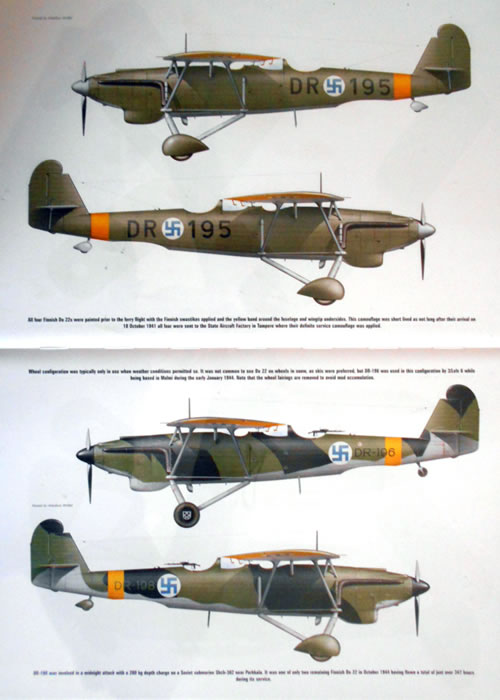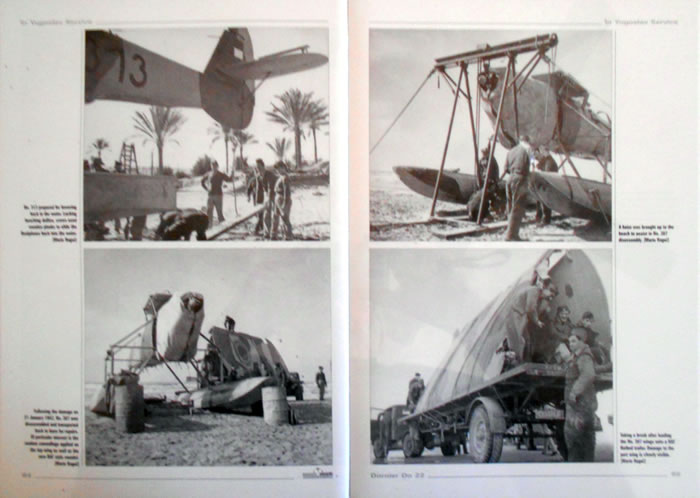S u m m a r y : |
Catalogue Number, Description and ISBN: |
Kagero Special Edition Monograph Number 10
Dorner Do 22
Design, development, testing and service with the Yugoslav, Greek and Finnish Air Forces.
by Djordje Nikolic
ISBN: 978-83-65437-61-7 |
Contents & Media: |
Hard covered case-bound, 300 x 215 mm, (nominally 12 x 9 inches), 150 A4 pages of text with an additional 3 pages of drawings and 13 colour schemes, including a fold out set of drawings in 1/72, 1/48 and seperate 1/32 scale sheet. Well printed on good quality paper in the Kagero tradition. |
Price: |
£29.25 available online from Casemate UK |
Review Type: |
First Look |
Advantages: |
Beautifully produced, well illustrated with excellent drawings and colour details. |
Disadvantages: |
No contents page or index. |
Conclusion: |
This is a thorough study into an important World War 2 aircraft and popular modelling subject, and strikes a good balance between historical photographs and modern computer art techniques. |
Reviewed by Graham Carter

HyperScale is proudly supported by Squadron
An aeroplane I now know a lot more about! This book gives a very detailed coverage of is development and use by the three nations mentioned. It appears to have been little used by German forces, and to have been largely used as a floatplane, although some images show it on wheels and a couple Finnish ones were mounted on big clumsy skis. In 1938-39 some 24 of these three-seat reconnaissance float-planes were built as two batches of a dozen for each of Yugoslavia and Greece. A further four were built, originally for Latvia but two ended up in Finland and the others were impressed into Luftwaffe service. Certainly not a large production run.

Interestingly the text for the first couple of chapters appears to be in rather stilted English and then, once the service use is covered, the expression becomes much easier to read.
The book is amply illustrated with photos, many from private sources, drawings and technical sketches, all really well reproduced and only two huge ones go over the centre-line. Captions are clear and informative.

Chapters are:
-
The Prototypes and rejection by the Luftwaffe (it had been proceeded with without official permission).
-
An extensive description (35 pages) of the construction of the aeroplane, including lubrication diagrams, internal wing and fuselage structure, instrumentation and so on.
-
A short explanation of the Operation and Maintenance of the aircraft, summarised from technical manuals I suspect.
-
36 pages of the story of their use by the Yugloslav Air Force, including in North Africa.
-
15 pages on its use by the Greeks.
-
17 pages on the two in the Finnish Air Force.
-
Camouflage and Markings used on the aircraft.
-
Appendices covering technical data, missions, Rank comparisons, a parts list(!) and painting instructions
-
Bibliography
Note that there is no Contents list nor an Index!! Lose that vital photo or fact and you will have to hunt through the book for it yourself.
The last 35 pages or so are made up of the scale drawings and colour schemes by Arkadiusz Wrobel, several of them as four-views.
Kits are apparently available in 1/72 (Xotic-72 and Aviation Usk), 1/48 (Planet and CMK – possibly the same kit?) and this book would be invaluable in the build of these. Xotic-72, CMK and Planet kits are all resin. Kora do a set of 1/72 Finnish skis for the Aviation Usk kit.
This is a great reference for both the modeller and the historian interested in this little known aeroplane that served an important role in the relative back-waters of WWII. Recommended.
Thanks to Casemate UK for the sample.
Review Copyright © 2018 by Graham Carter
This Page Created on 19 March, 2018
Last updated
19 March, 2018
Back to HyperScale Main Page
Back to Reviews Page

|
Home
| What's New | Features | Gallery | Reviews | Reference | Resource Guides | Forum |